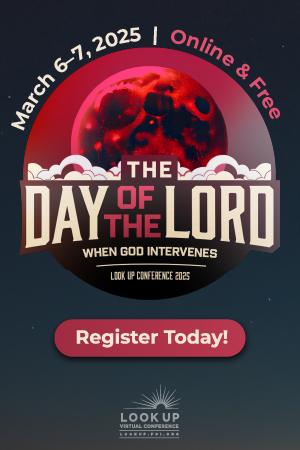Pilgrim Songs
A devotional journey through the Psalms of Ascents
Psalms 120 through 134 are referred to as the Songs of Ascents due to the superscription at the beginning of each psalm. The term ascent carries the notion of step or degree. The interpretation of this term and of the collection of psalms has engendered no small amount of debate.
Factors that emerge in the discussion include spiritual sanctification, musical notation, Temple worship, and historical significance. People not only analyze the 15 psalms individually but, as a result of the shared superscription, the collection as a whole.
Some believe the term ascent speaks of moving upward in spiritual growth. This is rather a mystical interpretation, not clearly tied to the texts except in a general sense. Augustine held this view.
He saw the ascension terminology as referring to the Christian’s upward growth. Any descent on the spiritual ladder was merely the spiritual Christian condescending to reach down to help others in the process of progressive sanctification.
Some believe the word ascent involves specific musical notation. John Calvin carefully reviewed different theories about the term and concluded the following:
This being a matter of small moment, I am not disposed to make it the subject of elaborate investigation; but the probable conjecture is, that this title was given to these Psalms, because they were sung on a higher key than others. The Hebrew word for degrees being derived from the verb . . . tsalah, to ascend or go up, I agree with those who are of opinion that it denotes the diff erent musical notes rising in succession.1
Numerous superscriptions within the psalms support Calvin’s view. For example, the superscription to Psalm 6 declares, “To the Chief Musician. With stringed instruments. On an eight-stringed harp.” The superscription to Psalm 22 reads, “To the Chief Musician. Set to ‘The Deer of the Dawn.’”
Although not clearly identifiable, these notations and many others in the Psalter show that Calvin’s idea is not far-fetched. However, most scholars do not subscribe to it. There simply is not enough evidence to affirm the position.
A third view is that the word ascent refers to the singing of these particular psalms on the 15 steps that led from the court of the women to the upper court in the Temple precincts. Wrote 19th-century Bible scholar Alfred Edersheim,
Fifteen steps led up to the Upper Court, which was bounded by a wall and where was the celebrated Nicanor Gate, covered with Corinthian brass. Here the Levites, who conducted the musical part of the service were placed. . . . Similarly, beyond the fifteen steps, there were repositories for the musical instruments.2
Edersheim followed a clear statement in the Jewish Mishnah: “Fifteen steps led up from within it [court of the women] to the Court of the Israelites, corresponding to the fifteen Songs of Ascents in the Psalms, and upon them the levites used to sing” (Middoth 2:5).
Presumably, each step represented one of the 15 psalms. The Levites would ascend the stairs as they sang, one step per psalm. The advantage of this view is that it has Jewish tradition from second Temple literature for support.
However, a fourth view is the most plausible: The songs were sung as pilgrims ascended up to Jerusalem for the various Jewish festivals.3 This understanding also allows for elements of the other views. For example, a spiritual dimension of growth should characterize the searching pilgrim making his way to the holy city, perhaps up the mountain path from Jericho to Jerusalem. Although harder to prove, the musical aspects could also symbolize the pilgrimage.
The chief idea of the Songs of Ascents appears to be that of pilgrimage, which is confirmed partially by the psalms themselves.
Although their content varies considerably, these psalms convey the idea of looking up to or going up to Zion. In Psalm 120, the allusion to Zion is implicit. The psalmist mourned that he dwelled in Meshech or the tents of Kedar (v. 5) as he cried to the Lord for help in his distress (v. 1). Zion is the Lord’s special dwelling and appears to be implied in the background.
In Psalm 121, the songwriter affirmed, “I will lift up my eyes to the hills—from whence comes my help? My help comes from the Lᴏʀᴅ, who made heaven and earth” (vv. 1–2). Commentator Allen P. Ross noted, “The pilgrim, contemplating his journey through the hills to Jerusalem, found assurance that the Lord, the Keeper of Israel, would keep him at all times on his journey.”4
The mountains surrounding Jerusalem also appear in Psalm 125. In verse 1 the psalmist compared those who trust in the Lord to Zion itself (the hill on which Jerusalem sits). In verse 2 he made a second comparison: “As the mountains surround Jerusalem, so the Lᴏʀᴅ surrounds His people from this time forth and forever.” Such a thought would comfort pilgrims making their way up to Jerusalem.
Psalm 122 gives perhaps the clearest picture of pilgrimage to Zion: “Jerusalem is built as a city that is compact together, where the tribes go up, the tribes of the Lᴏʀᴅ, to the Testimony of Israel, to give thanks to the name of the Lᴏʀᴅ” (vv. 3–4).
The return from captivity or exile is alluded to in Psalm 126 as an historical example that could be considered a kind of pilgrimage home. However, this entire collection of psalms must be taken to be any pilgrimage in light of general statements like those found in Psalm 122.
Many other statements in the Songs of Ascents mention Zion; allude to the Lord as the Creator; and speak of the Lord’s work among the Israelites, their families, and their nation.
Although these songs were written for Israel, believers today can benefit from them and can certainly join in the plea to “pray for the peace of Jerusalem” (122:6), a prayer that has validity even today.
Endnotes
- John Calvin, Commentary on the Book of Psalms, trans. James Anderson (Bellingham, WA: Logos Bible Software, 2010), 5:52–54.
- Alfred Edersheim, The Life and Times of Jesus the Messiah (McLean, VA: MacDonald Publishing, n.d.), 245.
- Tremper Longman III, Psalms, Tyndale Old Testament Commentaries (Downers Grove, IL: InterVarsity, 2014), 409–10. See also Allen P. Ross, “Psalms,” The Bible Knowledge Commentary, ed. John F. Walvoord and Roy B. Zuck (Wheaton, IL: Victor Books, 1985), 1:882.
- Ross, 883.





